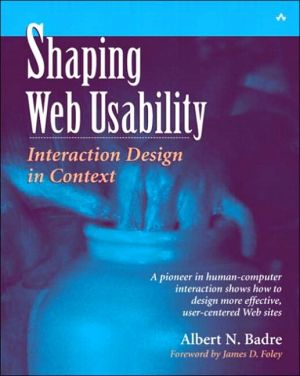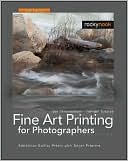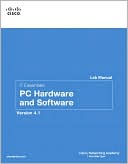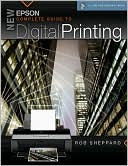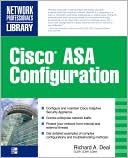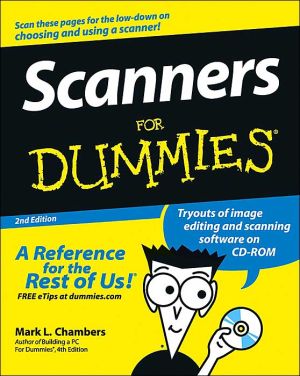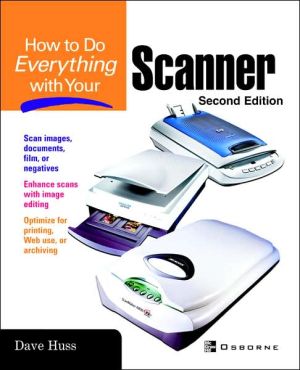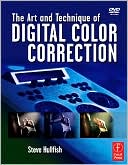Shaping Web Usability: Interaction Design in Context
"Al Badre's book is about an everlasting truth—a truth that many people, many companies, many organizations have learned the hard way. That is, when designing technological systems for people to use, one must take into account the characteristics of the users, and the nature of the task, and the knowledge, experience, biases, strengths, and weaknesses that the users bring to the task. In the case at hand, the task is using the World Wide Web."\ —James D. Foley, coauthor of Computer Graphics:...
Search in google:
"Al Badre's book is about an everlasting truth—a truth that many people, many companies, many organizations have learned the hard way. That is, when designing technological systems for people to use, one must take into account the characteristics of the users, and the nature of the task, and the knowledge, experience, biases, strengths, and weaknesses that the users bring to the task. In the case at hand, the task is using the World Wide Web."—James D. Foley, coauthor of Computer Graphics: Principles and PracticeAll successful computer applications have one thing in common: They are designed with the user in mind. Author Al Badre has for years contributed to the ideas and methods needed to make any computer application fully usable. In Shaping Web Usability, he adapts and applies this firmly rooted knowledge and practice specifically to the Web.Badre recognizes that Web sites comprise a unique application, where designers face a host of complex issues, including dynamic content, a broad and diverse audience, multiple entry points, intolerance of steep learning curves, and one-click abandonment. And with the arrival of handheld devices, Web designers confront additional difficult issues. Offering a structured approach to Web usability, Shaping Web Usability describes several contexts in which each site must be viewed, from the genre to which it belongs to the individual page. The book then provides a concrete methodology for designing a site effectively for the convenience, practicality, and pleasure of its users.Inside, Web designers will find useful information on such topics as: Links, buttons, site maps, and indexes for smooth site navigation Keywords and site search engines Effective design of home, content, and transaction pages Achieving a balance between Web usability and impressive graphics Retrofitting Web pages for small-screen and mobile devices Addressing users' information-processing limits Designing Web sites for older adults Addressing the international cultural context of the Web Specific guidelines to support design excellence Using an iterative design process with continuous testing to maximize Web usability Constructing storyboards and interactive prototypes Conducting task analysis to discover the sequence of events visitors use to reach their goalsNumerous real-world examples illustrate the book's concepts, techniques, and guidelines. This one book puts decades of knowledge and experience into the hands of every Web designer. Library Journal There is no shortage of material on web site usability (see Computer Media, LJ 3/1/02). Hot Text shines in its comprehensive coverage of online writing. One will find information on XML and writing for database-driven sites; creating FAQs, blogs and newsletters, and online r sum s; and becoming a web writer or editor. Although it does not break any new ground, Back to the User is a solid summary of current thought on the "user-centered" approach, covering both writing and design. It largely focuses on business sites, with additional information on e-commerce and branding. Both titles are appropriate for public libraries. Shaping Web Usability, while more academic, also addresses specific issues such as designing for older adults and handheld devices. Recommended for larger public and academic institutions. Copyright 2002 Cahners Business Information.
I got great pleasure from writing this book. Most satisfying is knowing how readers can use the book and how it will help them in their work. I tried to put myself in the reader's place, considering possible questions and seeking the answers—not unlike the approach I recommend for the Web design process. The emphasis on users comes from my own experience. I provide arguments showing the need for a user-centered approach to Web design and present a methodology for the systematic consideration of users during design and development.\ The reader will notice that I focus on design rather than implementation. Design principles and methods are long range, whereas implementation is tied to technology, which is often short-lived. This book is about designing usable Web sites—Web sites that are easy to use and that provide a pleasant, enjoyable, and successful user experience. It also examines the proposition that designing usable Web sites requires employing the Web-specialized methodology of designing for context.\ In my daily life as a human interface researcher and practitioner, I am often asked by Web developers and site owners for solutions to their problems, for guidance about design, and for sound ideas to make a difference in approaching the users. End users have also come to me with questions about using Web sites and software systems. Their confusion could have been avoided if designers had employed a more careful process when developing Web sites and Web application interfaces. This book explains this careful process. It answers the questions of Web developers, provides solutions to a wide range of development problems, and offers specific guidelines to support design excellence at every step in the process.\ Accordingly, this book draws heavily not only on research findings in the design and behavioral sciences but also on my own extensive experience as a Web usability consultant and practitioner. I target primarily Web developers who need to know about designing usable Web sites, but the general "Web-interested audience"—those who want to design their own Web sites—will also benefit.\ This book is not written exclusively for Web designers and developers but is also geared toward reaching those who want to learn about human computer interaction as it is specialized to Web environments. Web researchers will also find the book helpful because it covers Web usability issues that must be considered for emerging technologies and environments where there are limited research and experience. These environments include mobile Web environments and wireless technologies. In general, this book is for anyone with a serious interest in making the human-Web interactive experience gratifying and productive.\ The book is structured around the "Web contexts": treatments of the Web environment, the user, the Web genre, the Web site, and the Web page. A separate chapter is devoted to each. The book also does the following.\ \ Delineates a user-centered approach to Web design\ Tackles the usability issues of retrofitting Web pages for small-screen real estate as well as designing for mobile devices\ Takes up the challenge of the encounter between Web art and Web usability\ Discusses how to evaluate the usability of Web sites\ Addresses the cultural context of Web design\ \ The book presents many Web examples that illustrate concepts, techniques, and guidelines. This clarifies the close relationship between theory and practice, and thus narrows the potential gap between the researcher's interests and the practitioner's needs.\ Albert N. Badre September 2001
ForewordPrefaceAcknowledgments1Human Computer Interaction for the Web12Web Usability Strategy133The Web Environment374The Web User, Part 1: The Audience675The Web User, Part 2: Older Adults916Designing for Web Genres1097The Web Site1278The Web Page1479The Aesthetic Factor17310From Desktops to Handhelds18911The Cultural Context21312Evaluating Web Usability229Bibliography249Index267
\ Library JournalThere is no shortage of material on web site usability (see Computer Media, LJ 3/1/02). Hot Text shines in its comprehensive coverage of online writing. One will find information on XML and writing for database-driven sites; creating FAQs, blogs and newsletters, and online r sum s; and becoming a web writer or editor. Although it does not break any new ground, Back to the User is a solid summary of current thought on the "user-centered" approach, covering both writing and design. It largely focuses on business sites, with additional information on e-commerce and branding. Both titles are appropriate for public libraries. Shaping Web Usability, while more academic, also addresses specific issues such as designing for older adults and handheld devices. Recommended for larger public and academic institutions. Copyright 2002 Cahners Business Information.\ \ \ \ \ Presents a user-centered approach to designing web sites that considers human factors during the development phase. The author discusses the importance of defining the audience and ensuring smooth navigation through the site, and explores concepts for enhancing consistency, coherence, placement of information, information coding, color, and text clarity. Color screenshots. Annotation c. Book News, Inc., Portland, OR (booknews.com)\ \
